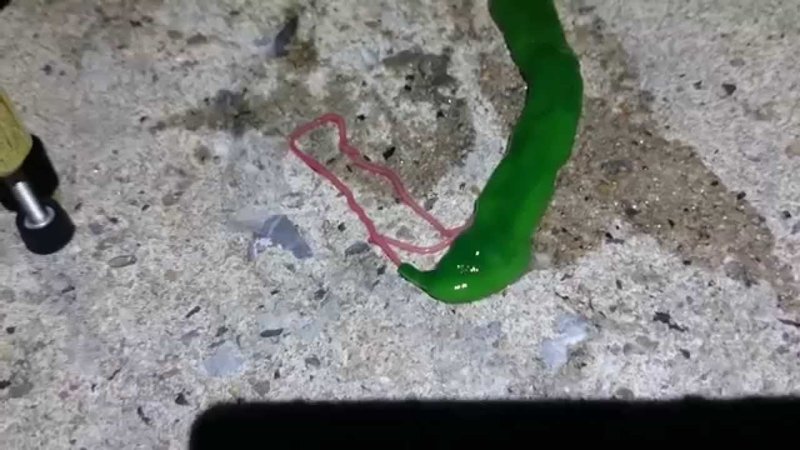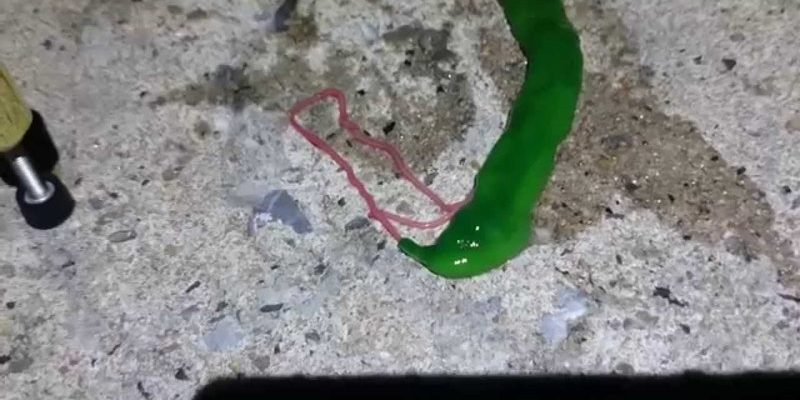
Ribbon worms, or *Nemertea*, are long, soft-bodied creatures that glide through marine environments. Their method of capturing prey—using a special kind of sticky slime—is a complex yet effective tactic in the underwater world. In this article, we’re going to dive deep into how these incredible animals use their unique slime to catch food. It’s way cooler than it sounds, and I promise you’ll be just as amazed as I am!
The Anatomy of a Ribbon Worm
To understand how ribbon worms use slime to capture prey, we first need to look at their unique anatomy. Ribbon worms can grow impressively long, with some species reaching up to 30 feet! Their bodies are soft and flexible, which allows them to navigate through their underwater habitats efficiently.
One of the most interesting features of ribbon worms is their **proboscis**. This is a specialized organ that can be extended from the body. Imagine it like a superhero’s arm that shoots out to grab things! When a ribbon worm detects prey nearby, it can shoot out this proboscis at lightning speed. It’s equipped with tiny, sticky substances that help it capture unsuspecting small fish or invertebrates.
This ability of the proboscis is not just for show. It plays a crucial role in the ribbon worm’s hunting strategy. The slime produced by the proboscis contains a mix of chemicals that not only immobilize the prey but also make it easier for the worm to swallow its meal.
How Sticky Slime Works
You might be wondering what exactly is in that sticky slime. The slime is composed of **mucus** and various proteins that create a gooey, adhesive texture. When the proboscis hits its target, the slime acts like a super-glue, anchoring the prey and preventing it from escaping.
Think about how hard it is to free your hand after you’ve touched a glue trap. That’s precisely how the prey feels! It struggles, but the ribbon worm’s slime keeps it in place, allowing the worm to reel in its meal with minimal effort.
Interestingly enough, the slime also has a secondary purpose. It helps to **camouflage** the ribbon worm in its environment. When the worm is wrapped in its own goo, it blends in better with the surroundings. This stealth mode is essential for sneaking up on prey and avoiding larger predators.
The Hunting Process
So, what does the hunting process look like in action? Picture a ribbon worm lying quietly on the ocean floor, nearly invisible to passersby. It waits patiently for the right moment to strike. When a small fish or crustacean swims close enough, the ribbon worm springs into action.
Here’s how it unfolds:
- The ribbon worm extends its proboscis rapidly.
- The sticky slime shoots out and ensnares the prey.
- Using its muscle control, the worm pulls the prey closer.
- Once in reach, it swallows the prey whole.
This hunting technique is incredibly efficient, allowing ribbon worms to catch their meals without much energy loss. Given the competitive nature of the ocean, this method helps ensure their survival and success as predators.
Why Sticky Slime Matters
Sticky slime isn’t just a cool hunting tool; it plays a significant role in the ecosystem. Ribbon worms often prey on small invertebrates, which helps maintain balance in aquatic food webs. Without these creatures, populations of other marine animals could explode, leading to overpopulation and depletion of resources.
Additionally, studying ribbon worms and their unique slime can lead to discoveries in the medical field. The same properties that make the slime sticky and effective at immobilizing prey might inspire new bioadhesives or medical sealants. Who knew these wormy predators could have such an impact beyond the ocean?
Comparing Hunting Techniques in the Animal Kingdom
While ribbon worms have their distinctive slime-based hunting style, they are not alone in the animal kingdom. Other creatures use innovative methods to catch their meals.
For instance, consider the **chameleon**, which uses its long, sticky tongue to snatch insects from a distance. Or the **octopus**, whose dexterity allows it to capture prey using its tentacles. Each of these animals has adapted their hunting methods to fit their environments.
While ribbon worms might not have the flashy skills of a chameleon or octopus, their slime strategy is uniquely effective in their watery realm. It’s a reminder of how diverse and fascinating life can be in the natural world.
Ribbon worms are a perfect example of how nature comes up with creative solutions for survival. Their ability to capture prey with sticky slime showcases the incredible adaptations that organisms have developed over time. It’s not just about eating—it’s about thriving in an often competitive and harsh environment.
Next time you think about the complexity of life underwater, remember the humble ribbon worm and its extraordinary hunting technique. The world is full of surprises, and these little creatures are just one of many examples of nature’s creativity. So, grab a coffee and take a moment to appreciate these slimy but effective predators!

